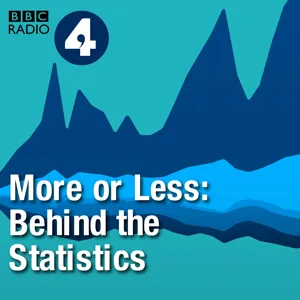Podcast Summary
Global goods markup increase: The average global markup for goods has risen significantly, increasing the difference between production cost and selling price, potentially impacting consumers and businesses
The cost of goods around the world has seen a significant increase, with the average global markup rising according to research from Oxfam. This means the difference between the cost to produce a unit and the selling price has grown. Economist Jan E. Kout from Pompeo Fabra University explained that by analyzing the relationship between prices and costs at the firm level, they were able to calculate this average. The implications of this trend could have significant consequences for consumers and businesses alike. Meanwhile, in the political sphere, the Democratic National Convention saw Joe Biden urging Americans to elect Kamala Harris as his replacement, but questions remain about what the President intends to accomplish in the remaining time of his term and the legacy he hopes to leave behind.
Markup Increase: Markups have increased significantly from 17% in 1980 to nearly 60% in 2020, but this isn't uniform across all companies. The median firm hasn't seen any rise, and some have even decreased. Despite potential errors in reported figures, the main message remains: markups have substantially increased.
Markups, or the difference between the price a business sells a product for and the cost of producing it, have significantly increased from an average of 17% in 1980 to nearly 60% in 2020. However, it's important to note that this increase isn't uniform across all companies. The median firm, or the one right in the middle of the market distribution, hasn't seen any rise in markups, and some firms at the bottom have even seen a decrease. Despite the potential error in the reported figures, the main message remains: markups have experienced a substantial increase, which is surprising to many. This increase may be due to various factors, such as changes in production costs, competition, or market conditions. It's crucial for businesses and consumers to be aware of these trends and consider their implications for pricing and profitability.
Monopolistic positions in tech sector: The dominance of a few large tech firms, such as Apple, Microsoft, and Amazon, leads to higher prices due to their monopolistic positions achieved through digital technology, resulting in both cost savings and price exploitation.
The increasing dominance of a select few large firms, particularly in the technology sector, is a major driver of higher prices in today's economy. These firms, including household names like Apple, Microsoft, and Amazon, are able to charge higher prices due to their monopolistic positions, which they achieve through extensive use and investment in digital technology. These firms often operate as natural monopolies, where scale and efficiency lead to lower costs. While these firms offer significant advantages through economies of scale and global reach, they can also act as both heroes and villains in the economy by producing goods more cheaply at scale, but also exploiting their dominant positions to set prices that cannot be touched by competitors.
Digital monopolies: Dominant digital monopolies can price higher and squeeze out competition, limiting innovation and reducing the number of startups, despite increased efficiency and lower costs for consumers.
While dominant digital monopolies have increased efficiency and lowered costs for consumers in some areas, they also exploit their dominant positions to price higher than in competitive markets. This squeezes out less efficient companies, leading to a decrease in innovation and a shrinking number of startups. Markups, as a metric, can be misleading as they don't account for other costs such as research and development, staff training, transportation, and overheads. Overall, the dominance of a few large companies in various industries can stifle competition and limit innovation.
Profit Rates vs Markups: Profit rates, not markups, give a clearer understanding of profit growth for different types of firms. High market, high profit firms experienced significant profit rate growth, while smaller firms saw no change.
While some firms may have the ability to increase markups, it doesn't necessarily mean they will make greater profits. Professor Jan Ekeld from Pompeo Fabry University in Barcelona explained that even with a high markup, a firm could still incur losses if other costs weren't covered. Instead, profit rates, or the share of profit in a firm's revenue, provide a more accurate representation of profit growth. Over the same period, average profit rates increased significantly for high market, high profit firms, but remained stagnant for smaller firms. This suggests that the rise in fixed costs does not justify the increase in markups for smaller firms. It's important to remember that profit rates and markups are interconnected, but not identical, and focusing on profit rates can provide a clearer understanding of profit growth for different types of firms.
